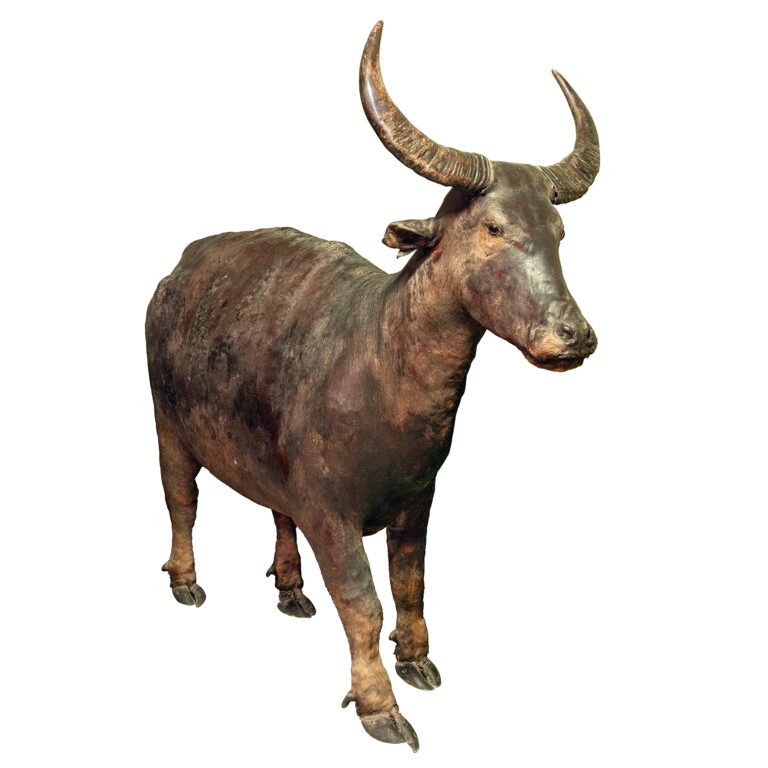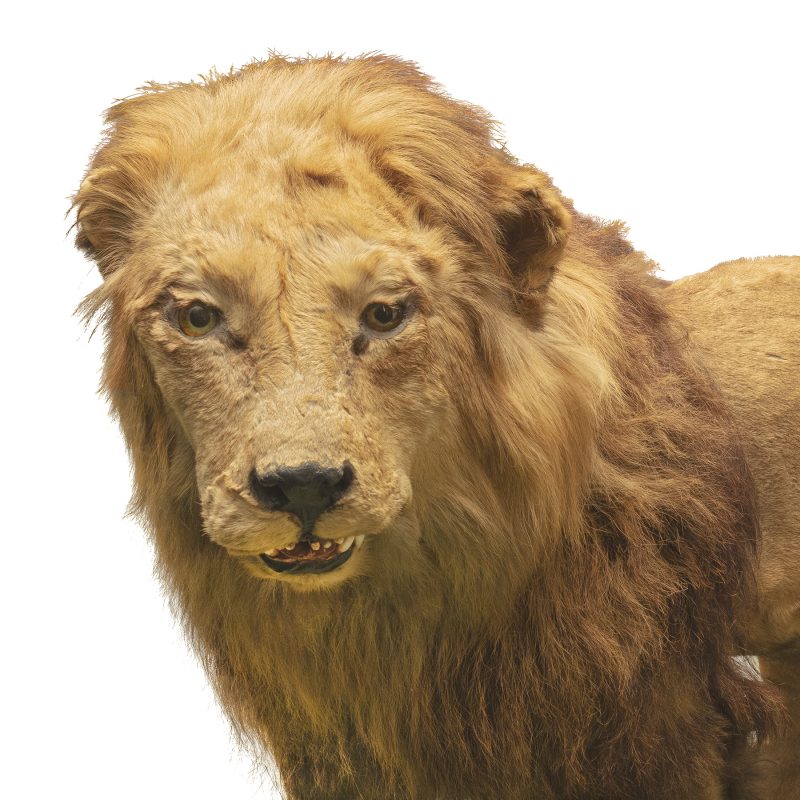Summary of results
This carabao—as well as the skeleton of another carabao also kept by the same museum—has been in the Darder Museum in Banyoles since 1916, the year of its foundation. The animal comes from the personal collection that the naturalist Francesc Darder started around 1870 in Barcelona. He built this collection through purchases and donations from various sources in different parts of Europe, and which, in 1915, shortly after retiring, he donated to the Darder Museum in Banyoles.
Although it has not been possible to establish clearly how the carabao arrived at the Darder collection, it seems very plausible that its origin is in the Philippine archipelago. Several sources have been consulted regarding the animals that were acquired, offered or sold by the Casa Darder, the Natural History Museum and the Barcelona Zoo—all institutions linked to Francesc Darder—and no definitive data has been found on the piece under study.
Even so, different elements lead us to suggest a chronological reconstruction of the provenance (see the following section) that links the carabao to the Philippines Exhibition in Madrid in 1887 and the 1888 Barcelona Universal Exposition
Chronological reconstruction of provenance
The main hypothesis that we have worked with is that this carabao arrived at the Darder collection in 1888, coming from the Philippines Exhibition in Madrid in 1887. There is a photograph, taken in Madrid by J. Laurent y Cía., showing two carabaos in the Retiro Park, together with a group of people from the Philippine archipelago. The following year, in 1888, an advertisement by the same Darder mentions that during the Barcelona Universal Exposition various live animals would be exhibited, including two carabaos from the Philippines which had been received alive and whose skins and skeletons were being prepared.
Following this thread, we could establish the hypothesis—which remains to be confirmed with new sources—that the two carabaos, together with a set of ethnographic objects, were acquired in the Philippines (in 1886 or 1887) and taken to Madrid for the 1887 exhibition. It is plausible that, given the existing relations between Darder and Víctor Balaguer, the former managed to obtain the cession or donation of the animals for the 1888 Barcelona exhibition. Once the Universal Exhibition was over, the two carabaos would have passed to Darder’s private collection (1888–1889) and, finally, to the Darder Museum in Banyoles in 1915 (which was inaugurated in 1916), where they are still kept today.
Estimation of provenance
The origin of the carabao is the Philippine archipelago, and it is quite possible that it arrived in Spain towards the end of the 19th century (we can suppose around 1886 or 1887), although we do not know exactly from which locality or specific island it comes from. We can deduce that it was acquired and transported thanks to the colonial institutions and commercial networks that the Spanish had in the archipelago.
Possible alternative classifications
The word ‘carabao’ is of Tagalog origin, meaning ‘buffalo’, and it is transcribed as ‘kalabaw’. In the Philippines, different communities regard the animal as a symbol of hard work, struggle, and patience. It is also a widespread national symbol in the archipelago, although it is not officially recognized. Its name could be added in other languages spoken in the Philippine archipelago—there are about 150 of them—such as Cebuà/Bisaya/Sugbuhanon (Bupalo) or Subanen (Kelabaw), one of the languages of Mindanao.
Complementary sources
Archives:
Índices de correspondencia oficial de Filipinas. 1886-1887. Archivo Histórico Nacional. ES.28079.AHN/16//ULTRAMAR,5294, exp.1.
Consejo de Filipinas y de las Posesiones del Golfo de Guinea. Archivo Histórico Nacional.
Inventari del Museu Darder. Espai d’Interpretació de l’Estany.
Bibliography:
Balaguer, Víctor (1895). Filipinas. Madrid: R. Anglés, Imprenta y Cromotipia.
El naturalista (1889). Any III, 1, 6.
—(1889). Any III, 2, 14.
—(1891). Any V, 5, 3.
Flores Hernández et al. (1887). Crónica de la Exposición de Filipinas. Madrid: M. G. Hernández.
Sánchez Gómez, L. Á. (2003). Un imperio en la vitrina: El colonialismo español en el Pacífico y la Exposición de Filipinas de 1887. Madrid: CSIC Press.
Taviel de Andrade, E. (1887). Historia de la Exposición de las Islas Filipinas en Madrid en 1887 (2 vol.). Madrid: Imprenta de Uliano Gómez y Pérez.


